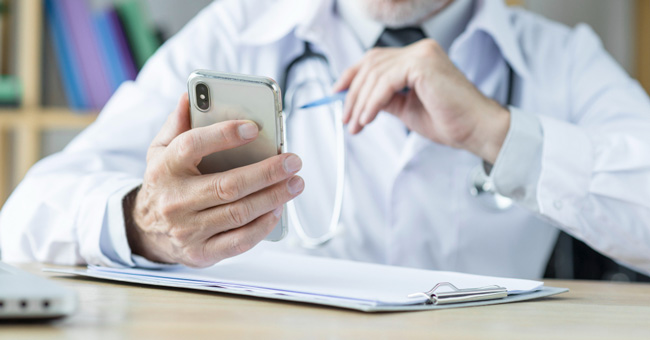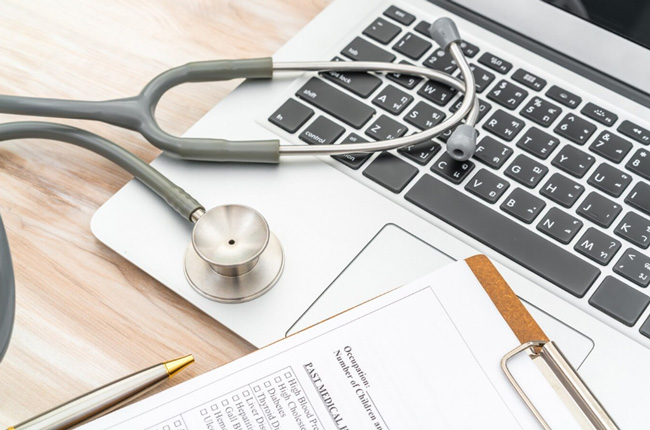Mobile Tech in Healthcare: How It Benefit & Applications
Healthcare has rapidly changed as technology has. One of the latest advancements in healthcare includes the necessary changes that were made as a result of lockdown procedures during the height of the COVID-19 pandemic. The use of mobile devices in healthcare has increased, and between 80%-95% of healthcare workers use their devices for work in a clinical setting.
In this article, we'll discuss the advancements in mobile technology in healthcare, its benefits, and how mobile tech is used in the industry. Let's get started!
1 How Mobile Technology is Used in Healthcare
Using mobile tech to deliver services or convenience in healthcare is rapidly increasing. The COVID-19 pandemic revolutionized telehealth and patient expectations for having easier access to their care.
mHealth applications
mHealth applications, also known as mobile health applications, are applications on mobile devices used for the purposes of helping with diagnosis, research, and improving health outcomes. Healthcare mobile technology is a rapidly developing area, and year by year, more uses for mHealth applications continue to emerge.
Remote patient monitoring
Remote patient monitoring, also known as RPM, is a feature of telemedicine that allows for health providers to continuously monitor their patients. Patients can either self-input data such as heart rate, blood sugar, and other key vital signs, or they can have their wearable devices and monitors upload the information to RPM apps.
RPM then allows the provider to assess the patient's health and make any necessary changes to the patient's medication or request that the patient come to an in-person appointment.
Telemedicine
Telemedicine is used for online appointments, online consultations, and even health record storage. Providers can use telemedicine technology to have full-length appointments with patients, including to prescribe medication, and can message clients with health concerns.
These communications all occur through secure methods, such as Zoom or other video platforms. They often connect to "patient portals" as well.

Electronic Health Records (EHRs)
Accessing one's health record has truly never been easier. Before the addition of the EHR system, people used to have to submit paper records request forms through fax or in person. These records requests would require an employee to access a physical or digital file and print or make copies to deliver to the individual.
Now, with a secure password and a patient portal, people can access their health records with the touch of a button.
Appointment Scheduling and Reminders
Sending appointment reminders through electronic means has been a game-changer for the healthcare industry. People are busy, and having quick and easy access to their appointment dates and times is helping so many people avoid forgetting about key health appointments.
These appointment scheduling and reminder features usually connect to a patient portal as well.
2 Worries About Using Healthcare Mobile Technology
However, with increases in the use of technology in the healthcare industry come some serious concerns about healthcare data safety. The healthcare industry is notoriously behind the rest of the world due to strict regulations that enforce data security. This means that outdated methods like paper filing systems are more secure for the industry to use.
But while the addition of modern conveniences means that security concerns are added, there are ways to make using tech for healthcare more secure. These methods are also especially important with the use of mobile devices in healthcare.
Data Security and Privacy
Data security is paramount in the healthcare industry to avoid stolen information from unsecured devices. Distributing standards for employee devices may not always result in compliance. Setting strong passwords and only connecting to certain networks can be encouraged, but there is no telling how many employees are actually taking the steps to make sure their devices are secured.
However, with a mobile device management solution, these changes can be enforced through rules and policies. An MDM solution allows an employer to connect employee devices to policies, which then enforce these standards.
Instead of suggested security measures, employees must have these measures on their devices as set by the MDM. Otherwise, the device is out of compliance and may not have functionality.

Access Control and Device Usage Control
This is an essential function for healthcare workers who are using their mobile devices for work. There must be a way to shut down access to the device in the event of an emergency, such as a lost or stolen device.
For example, should a doctor's device go missing, there must be a way to secure that device. Otherwise, sensitive patient information could be stolen or held at ransom by a bad actor.
To have this functionality, healthcare workers must have their devices connected to a mobile device management solution, also known as an MDM solution. Examples of an MDM include AirDroid Business, which allows employers to connect employee devices to one system and remotely manage the device usage.
These functions can work with business-owned devices or employee-owned devices through a function known as Work Profile.
Health Information Management
Health information management is an important part of maintaining security and privacy in the healthcare sector. By definition, healthcare information management is the analysis and protection of secure healthcare data and information.
Applications that perform health information management include patient portals, clinical decision support systems, medical staff support systems, and other healthcare applications.
These apps store personally identifiable information, healthcare records, medications, diagnoses, and other sensitive pieces of patient information.
Legal Issues
Failing to adequately protect patient information can have serious legal consequences. Protecting private information in the healthcare industry is of the utmost importance. If patient information is not protected, providers risk losing their jobs or, worse, their licenses and ability to practice in the field altogether.
In our next section, we'll break down the different compliance standards that the healthcare industry must be held to. If security measures are not put in place and breaches occur, hospitals, clinics, providers, and nurses may be held liable under these standards.
3 Compliance That Healthcare Organizations Must Adhere To
1) Health Insurance Portability and Accountability Act (HIPAA)
The Health Insurance Portability and Accountability Act, also known as HIPAA, is perhaps the most important piece of health information legislation in the United States. HIPAA provides essential protection for Americans regarding their health information.
HIPAA was established in 1996, and officially put standards in place that gave patients rights to their privacy of personal health information. HIPAA also gave patients the right to request their health records from medical providers.
Compliance with HIPAA should be at the forefront of all policies pertaining to mobile device use in the healthcare industry.
2) General Data Protection Regulation (GDPR)
The General Data Protection Regulation impacts the healthcare industry in the European Union by establishing similar parameters to HIPAA. However, the GDPR goes one step further and is widely considered to be the toughest privacy and personal security law in the world.
The GDPR was established in 2016 and became effective in 2018.
For those operating in the EU, the GDPR is essential to follow, as the guidelines are very strict and important to comply with in the healthcare industry.
3) Food and Drug Administration (FDA) Regulations
Food and Drug Administration, also known as FDA, regulations are policies in the United States. The FDA regulations that are in place today help to ensure the safety and security of prescription drugs, products, and devices.
This information applies to applications and may be applicable to mHealth mobile device applications. These regs should be explored when making sure that healthcare provider mobile devices are fully compliant.
4) Federal Information Processing Standards (FIPS)
Additionally, Federal Information Processing Standards, also known as FIPS, mandate that security requirements are held by the federal government in the United States. These requirements are pertinent to certain federal computer systems used by healthcare providers, such as Veterans Affairs healthcare providers and other health insurance data.
FIPS standards are not applicable to all healthcare providers but may provide some guidance as to how secure healthcare data should be kept, as FIPS is considered a gold standard of data security in the U.S.
5) International Organization for Standardization (ISO) Standards
Finally, the International Organization for Standardization, or ISO, standards maintain that health professionals and the industry as a whole must be similar. Conformity is important to the ISO and the ISO has many standards that help to maintain the global healthcare industry. ISO standards on healthcare data are very helpful and can be strict on security.






Leave a Reply.